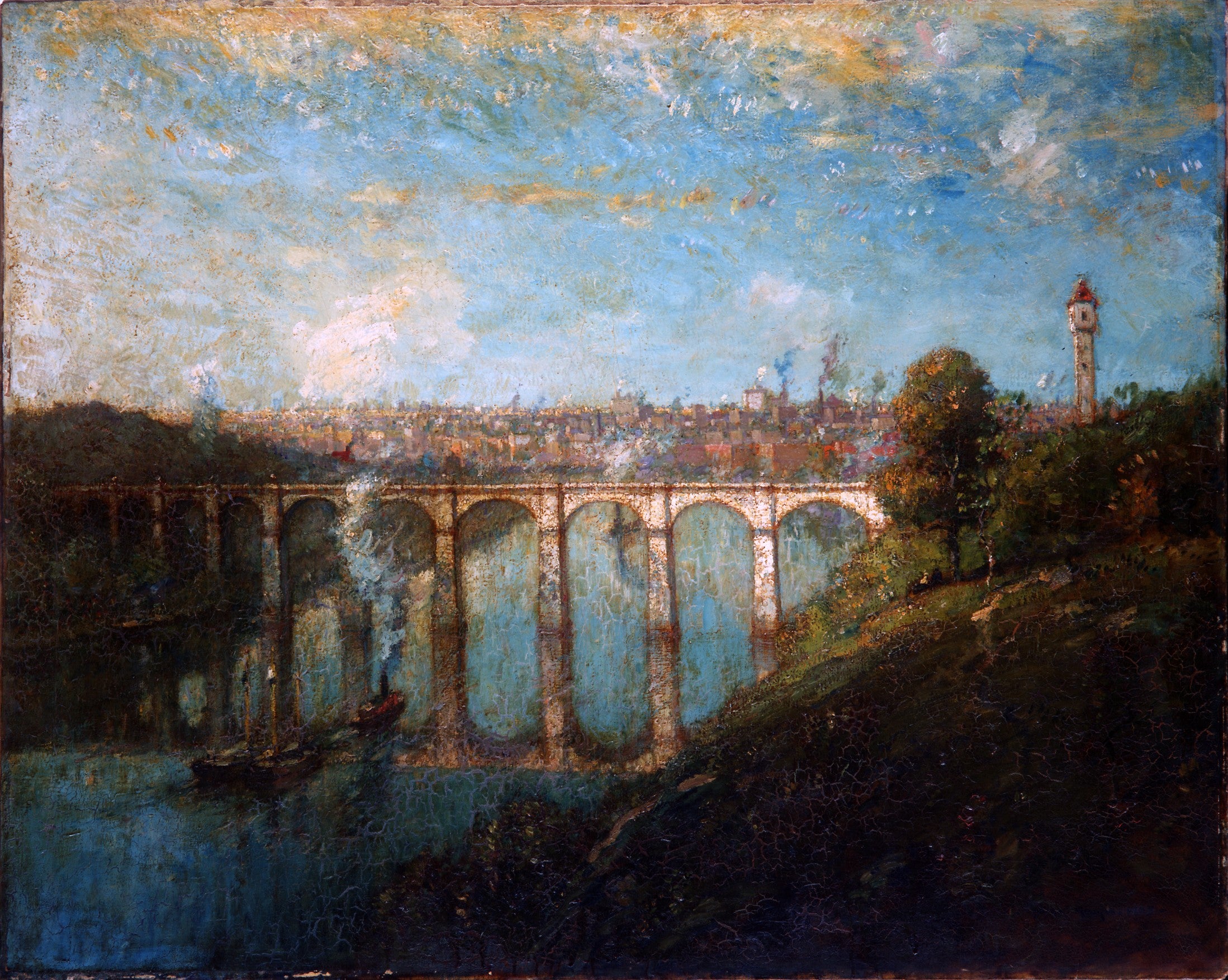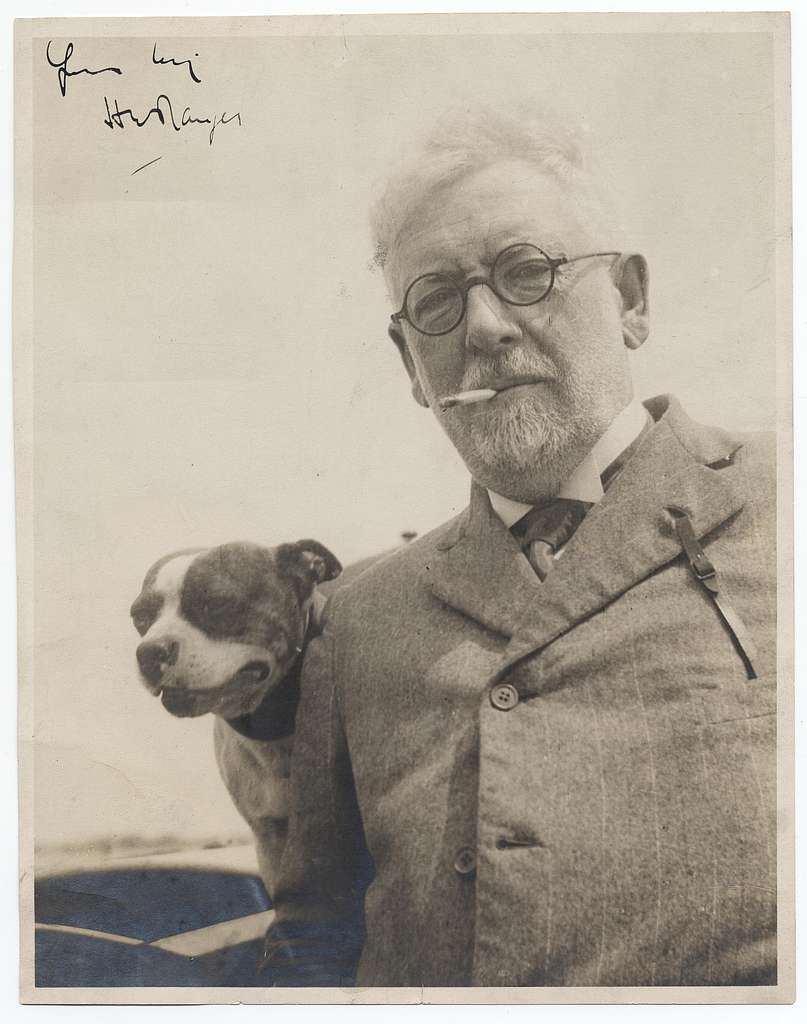
High Bridge, New York
High Bridge, New York (1905) by Henry Ward Ranger is a luminous example of early 20th-century American landscape painting, capturing both the natural beauty and architectural presence of one of New York’s most historically significant structures. Painted in oil on canvas, the work reflects the tonalist style for which Ranger is best known—favoring atmospheric effects, muted palettes, and a sense of poetic quietude over dramatic realism.
The High Bridge, which spans the Harlem River and is the oldest surviving bridge in New York City, was completed in the mid-19th century as part of the Croton Aqueduct system. By the time Ranger painted it, the bridge had become not only a marvel of engineering but also a symbol of New York's growing urban identity nestled within a still-picturesque landscape. Ranger’s depiction situates the structure within a serene natural setting, where soft light, gentle shadows, and delicate tonal harmonies imbue the scene with a reflective, almost nostalgic mood.
This painting is part of The American Wing’s collection at the Metropolitan Museum of Art, a fitting placement given its embodiment of American artistic ideals during a period of transition—from 19th-century romanticism toward the more expressive and moody landscapes that anticipated modernism. Ranger, a key figure in the Old Lyme Art Colony and an influential voice in American Tonalism, often sought to convey nature not as it appeared in fleeting detail, but as it felt—quiet, eternal, and soulfully observed.
In High Bridge, New York, Ranger merges natural and man-made elements with seamless harmony, presenting a contemplative view of a rapidly changing world. The painting not only celebrates a landmark of urban progress but does so through the lens of a painter deeply attuned to the subtle interplay between light, land, and memory.
Choose options


High Bridge, New York
About Artist

Henry Ward Ranger
